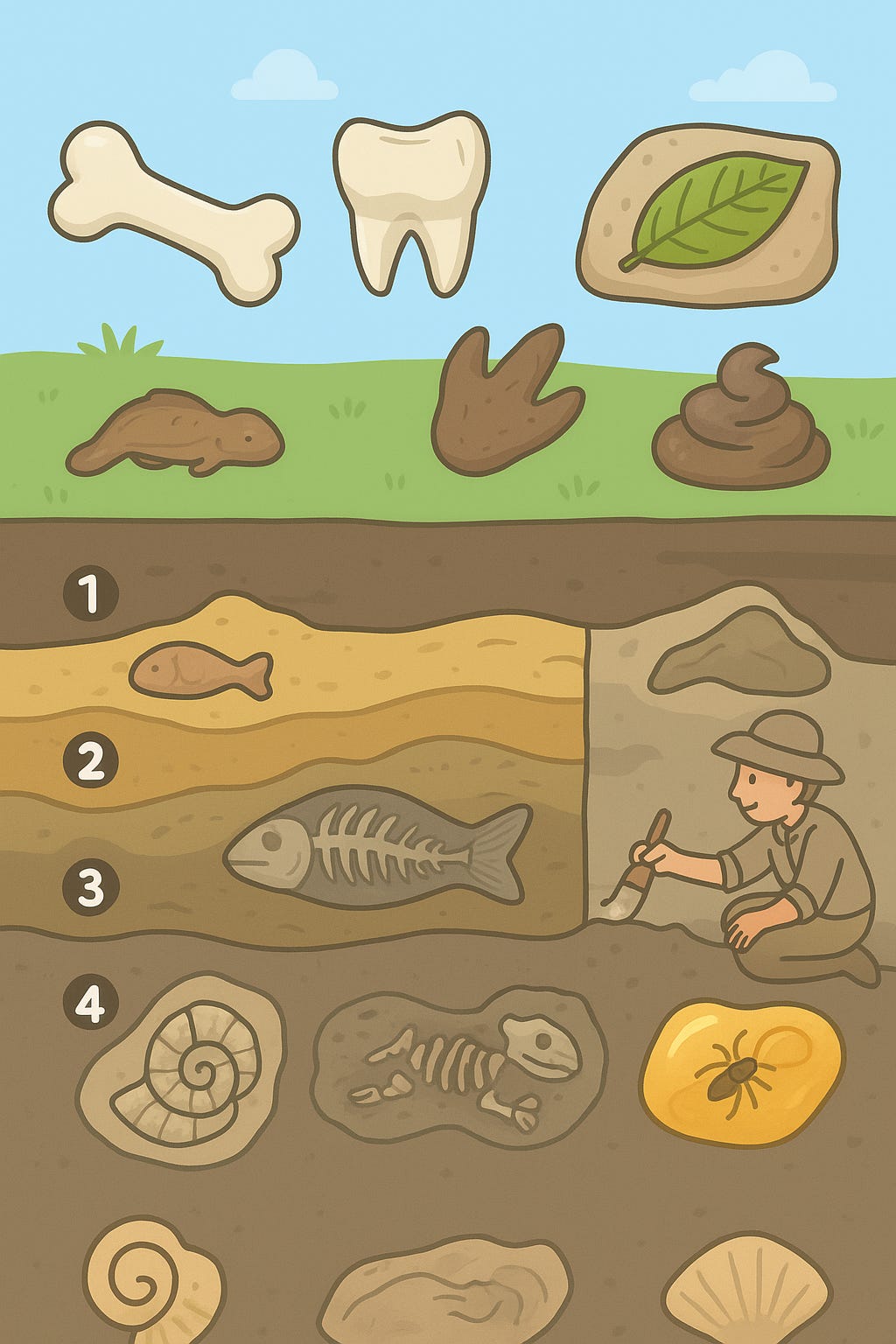What Are Fossils
How They Are Formed
Fossils are preserved remains or traces of ancient life — animals, plants, fungi, and even microbes — that lived in the past. They are the physical evidence scientists use to study life on Earth long before people existed. Fossils can be the actual hard parts (like bones or shells), impressions (like leaf prints), traces of activity (footprints, burrows), or things preserved in substances (like insects in amber).
How Are Fossils Formed?
Fossils don’t form overnight. It takes thousands to millions of years! Fossilization is not a single process but many different processes that can turn once-living material into something preserved in rock. Most fossilization happens in these broad stages:
Death or deposition. The organism dies or leaves a trace (footprint, burrow, leaf fall).
Rapid burial. Sediment (mud, sand, volcanic ash) covers the remains quickly. Rapid burial is crucial because it protects the remains from scavengers, oxygen, and decay.
Decay of soft parts. Soft tissues usually decay rapidly; what’s left often are hard parts (bones, teeth, shells) or impressions of soft parts.
Diagenesis — chemical and physical change. Over time, sediments become rock (lithification) and minerals in groundwater replace or fill the spaces in the remains. Temperature, pressure, and chemistry change the buried material.
Exposure and discovery. Erosion, tectonic uplift, or human digging can expose fossils for paleontologists to find.
Types of Fossils:
Body fossils – actual parts of the organism (bone, tooth, shell).
Trace fossils – signs of activity (footprints, nests, burrows, poop).
Amber fossils – insects or plants trapped in tree sap that hardened.
Imprint fossils – leaf prints or animal outlines left in soft mud or rock.
Why Are Fossils Important?
Fossils help us:
Understand what animals looked like, like dinosaurs.
Learn how Earth has changed.
Discover extinct animals.
See how plants and animals evolved over time.
Fossil Facts:
The word “fossil” means “dug up”.
Most fossils are found in rocks near rivers, deserts, and oceans.
Not all dinosaurs turned into fossils — only a small number did!
A fossil can be as tiny as a grain of sand or as huge as a dinosaur skeleton.
A paleontologist is a scientist who studies fossils to learn about life that lived millions of years ago.


